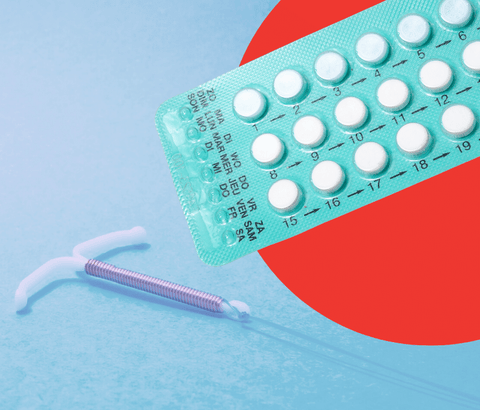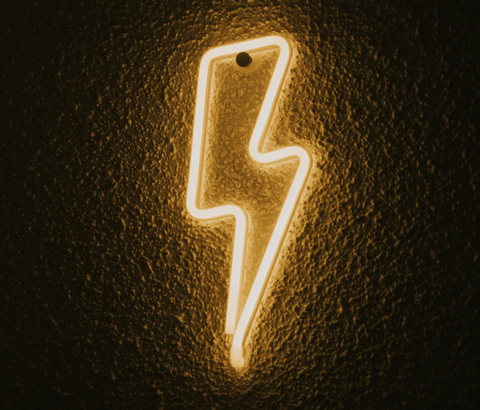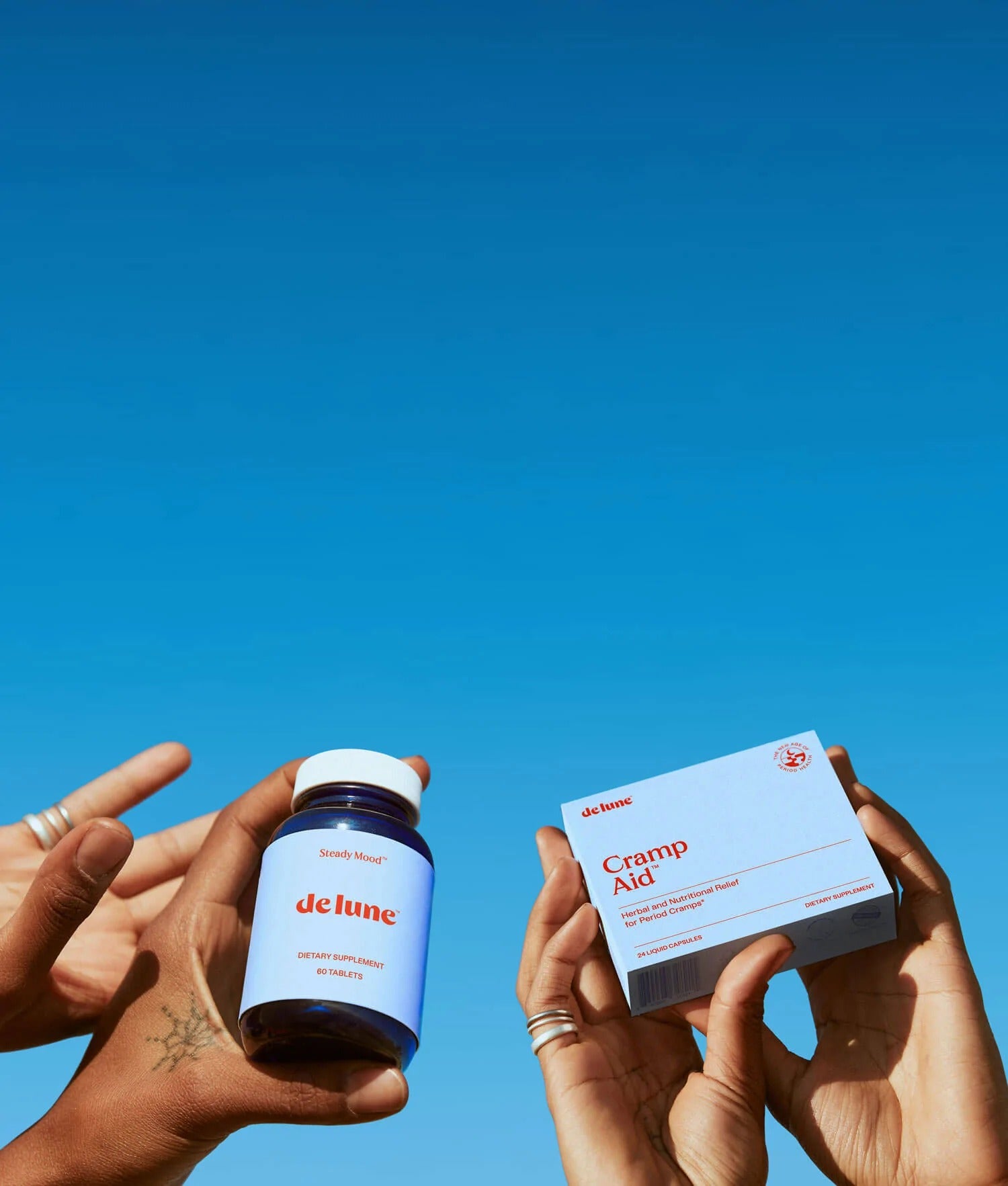All types of IUDs (i.e. intrauterine devices) share the same basic characteristics:
- They’re small, T-shaped objects that, once inserted by a doctor, embed themselves into the uterine wall.
- They work by slowly releasing substances into the uterus that make it unfavorable for pregnancy.
- They’re more than 99% effective at preventing pregnancy for 3-12 years, depending on the type of IUD [1]. Once removed, you’re able to get pregnant again.
However, different types of IUDs can change your period in different ways. This article explains how the type of IUD you choose can influence how bad your cramps are, how heavy or light your flow is, and whether or not you’ll get a period at all.
Here are the most important things to know about periods with different types of IUDs:
- For most people, periods become lighter, shorter, and less frequent with a hormonal IUD. Some people may also get less intense period cramps.
- Periods with copper IUDs are typically heavier, longer, and possibly more painful, especially during the first year of use.
- Hormonal IUDs are popular among those with heavy or painful periods. But there are drawbacks worth considering before deciding which type of IUD is for you.
- If you're considering getting an IUD primarily to help with period cramps or PMS (rather than to prevent pregnancy), know that De Lune created a natural, non-invasive way to make periods easier.
How different types of IUDs work
There are two main types of IUDs: hormonal IUDs and non-hormonal IUDs (also known as copper IUDs). Each works in different ways to prevent pregnancy, and those differences have big implications for your period.
What they do:
- Hormonal IUDs prevent pregnancy mostly by thickening cervical mucus so sperm can’t enter the uterus.
- They also help make the uterine lining thinner, creating a less welcoming space for an embryo to develop.
Hormonal IUDs release progestin—a synthetic drug form of the natural hormone progesterone. Progestin and progesterone are very similar, and sometimes act the same way. For example, they both thin the uterine lining.
Due to small differences in chemistry, however, they sometimes act in opposite ways. Notably, natural progesterone guides sperm toward your egg by helping them swim faster [2], whereas synthetic progestin separates sperm from your egg with a thick layer of mucus.
When hormones come from an outside source like an IUD, you make less of the natural stuff, and the sperm-blocking effects of progestin replace that of progesterone. In the off chance sperm transverse progestin’s mucus barrier, a fertilized egg can’t get the support it needs from a thinner uterine lining.
Brands of hormonal IUDs:
There are four brands of hormonal IUDs available in the US: Mirena, Kyleena, Liletta and Skyla.
What they do:
- Copper IUDs, or non-hormonal IUDs, prevent pregnancy by releasing copper into the uterus. They do not contain any hormones.
Copper IUDs are wrapped in copper wire that emits copper ions into the uterus. Copper is toxic to sperm cells. When exposed, they lose their ability to swim toward an egg [3].
While small amounts of copper are needed for general health, it’s known to cause inflammation and tissue damage [4]. When it comes to preventing pregnancy with copper, however, damaging uterine tissue is part of the point.
Organs don’t like having foreign objects in them. In addition to rendering sperm useless, copper IUDs intentionally inflame the lining of the uterus so it’s less hospitable to a fertilized egg.
Is that much copper safe?
Experts say the copper IUD is safe for most people [5] (though like any medication, it has risks [6]).
There’s no clear evidence that copper IUDs cause copper toxicity [7]. Although some copper appears to absorb into the uterine wall [8], only those with a copper allergy, hypersensitivity, or condition that causes copper accumulation are advised against the copper IUD [9].
Brands of copper IUDs:
Only one brand of copper IUD is available in the US: Paragard.

What to expect from your period with different IUD types
Because each type of IUD works in a different way, your period may be drastically different depending on which type of IUD you choose.
Periods with a hormonal IUD:
Typically lighter, shorter, or practically nonexistent
Hormonal IUDs reduce the thickness of the uterine lining—the part of the uterus that’s shed each month as your period. In a study involving over 1500 women, 77% of hormonal IUD users noticed reduced blood loss; 59% noticed fewer bleeding days; and 52% noticed longer intervals between periods [10].
Hormonal IUDs come in different doses. Higher doses can thin the uterine lining so much, there’s basically nothing to shed. You may only get a period a few times a year, if at all.
Spotting between periods is possible with this type of IUD, however; about 1 in 4 hormonal IUD users experience it [10].
Periods with a copper IUD:
Typically heavier and longer
Copper IUDs have been shown to increase the amount of menstrual blood by up to 20-50% during the first year of use [11]. In the same large study as above, 60% of copper IUD users noticed more blood loss, and 50% noticed more bleeding days compared to before they got a copper IUD.
Copper IUDs usually don't change the length the your cycle; 62% of users got a period as often as they did pre-IUD. Copper IUD users were about as likely to spot in between periods as hormonal IUD users [10].

Cramps on IUDs: hormonal vs copper
Two types of cramps can arise with an IUD: cramps after insertion, and menstrual cramps.
Both types of IUDs are about equally as unpleasant to insert (imagine a PAP smear, but more uncomfortable), and backaches and abdominal pain are common in the days after insertion [10]. But different types of IUD can have opposite effects on menstrual cramps.
Menstrual cramps with hormonal IUDs:
Possibly less painful and frequent, but usually unchanged
While some additional cramping is possible within the first 3-6 months of getting a hormonal IUD, they can eventually reduce period pain.
Higher doses of the hormonal IUD may result in less cramping for some people, but not everyone. In one study, ~18% of women reported less intense cramps after getting a high-dose hormonal IUD [10]. If your dose makes your period come less often, however, you may cramp less frequently because you’re menstruating less frequently.
Cramps and bleeding may be reduced for as long as a hormonal IUD is in place. Once removed, things will return to whatever was normal for you pre-IUD. At that point you can either have a new IUD inserted, or turn to another safe and effective way to relieve period cramps, like Cramp Aid.
Menstrual cramps with copper IUDs:
Possibly more painful and frequent, but usually unchanged
Worsened period cramps are possible with the copper IUD, especially during the first year [12]. But most people don’t notice much difference in their cramps with the copper IUD.
In one large study, about 27% of women experienced worsened cramps with a copper IUD, and 37% experienced cramps more often [10]. But in another study, cramps actually decreased during the first 6 months with the copper IUD [13].
Some research shows severe pain and bleeding results in 15% of users having their copper device removed within the first year [12]. One study found removals due to pain were more common in copper IUDs vs hormonal [14], but another found hormonal IUD users were actually more likely to remove their device because of cramps [10].
Will cramps with an IUD subside over months or years?
Cramps on IUDs get better with time for most people. Research shows period pain severity typically returns to baseline after 12 months with an IUD [12]. If you’re still experiencing severe cramps after a year or more, see a healthcare practitioner.
Heavy menstrual bleeding with an IUD typically subsides over the first year as well, but spotting between periods may get worse. In one study, those with a copper device noticed more days of spotting the longer they had their IUD [12].
If there could be more bleeding and cramps with copper IUDs, why get one?
Some research shows copper IUDs have the highest rate of user satisfaction among all birth control medications [15]. Here’s why some people prefer copper vs hormonal IUDs:
They last longer
The Paragard copper IUD lasts up to 12 years, whereas hormonal IUDs last 3-7 years depending on the brand. Because IUD insertion is uncomfortable and carries risks of complications, some folks choose the longer-lasting option to avoid additional insertion procedures.
They don’t disrupt your hormonal cycle
Copper IUDs don’t contain drug hormones, and don’t change the hormones you make naturally. The biggest benefit of preserving your natural hormonal rhythms with a copper IUD is that you’ll still ovulate each cycle.
Ovulation is the once-a-month release of an egg from an ovary. Although suppressing ovulation prevents eggs from being fertilized, it’s not the only effective way to avoid pregnancy, and you may miss out on health benefits that come with ovulating regularly.
After ovulation, the ovaries start making the hormone progesterone. Research shows progesterone can help soothe inflammation [16], protect the brain [17], and calm anxiety [18], among other benefits.
All hormonal methods of birth control shut down ovulation at least part of the time. While less drastic than birth control pills (which stop ovulation 100% of the time), hormonal IUDs are shown to suppress ovulation in 85% of cycles during the first year, then 15% of cycles after that [19].
How to help with period cramps from IUDs
We formulated Cramp Aid to provide fast, natural, effective relief from period cramps—no matter how your IUD changes your period. In a survey of 140+ Cramp Aid users, 92% found relief—most within one hour of taking their first dose.
Note that we recommend waiting at least a week after getting your IUD inserted before using Cramp Aid. (Cramp Aid contains herbs that help shed the uterine lining easily—great news for your period, not great if your IUD is trying to embed itself into your uterine wall). But after this time, count on it for quick relief, no matter what your cycle throws at you with an IUD.

This information is for education purposes only. It is not a substitute for professional medical advice, and is not intended to diagnose, treat, cure, or prevent any condition.
References
1. https://www.acog.org/womens-health/infographics/effectiveness-of-birth-control-methods
2. Calogero, A. E. er al. (2000). Effects of progesterone on sperm function: mechanisms of action. Human reproduction, 15(suppl_1), 28-45.
3. Ortiz, M. E., & Croxatto, H. B. (2007). Copper-T intrauterine device and levonorgestrel intrauterine system: biological bases of their mechanism of action. Contraception, 75(6), S16-S30.
4. Berthon, G. (1993). Is copper pro-or anti-inflammatory? A reconciling view and a novel approach for the use of copper in the control of inflammation. Agents and actions, 39(3), 210-217.
5. https://my.clevelandclinic.org/health/drugs/17741-paragard%C2%AE-copper-iud
6. https://www.acog.org/womens-health/faqs/long-acting-reversible-contraception-iud-and-implant
7. Prema, K. et al. (1980). Serum copper in long-term users of copper intrauterine devices. Fertility and sterility, 34(1), 32-35.
8. Fahmy, K. et al. (1993). Serum and endometrial copper, zinc, iron and cobalt with inert and copper-containing IUCDs. Contraception, 47(5), 483-490.
9. https://www.paragard.com/pdf/PARAGARD-PI.pdf
10. Sivin, I. et al. (1984). Intrauterine contraception with copper and with levonorgestrel: a randomized study of the TCu 380Ag and levonorgestrel 20 mcg/day devices. Contraception, 30(5), 443-456.
11. Andrade, A. T. L. et al. (1988). Consequences of uterine blood loss caused by various intrauterine contraceptive devices in South American women. Contraception, 38(1), 1-18.
12. Hubacher, D. et al. (2009). Side effects from the copper IUD: do they decrease over time?. Contraception, 79(5), 356-362.
13. Sanders, J. N. et al. (2018). Bleeding, cramping, and satisfaction among new copper IUD users: A prospective study. PloS one, 13(11), e0199724.
14. Lara-Torre, E. et al. (2011). Intrauterine contraception in adolescents and young women: a descriptive study of use, side effects, and compliance. Journal of pediatric and adolescent gynecology, 24(1), 39-41.
15. https://www.zavamed.com/uk/pharmaceutical-sentiment.html
16. Niven, D. et al. (2004, March). An anti-inflammatory role for progesterone at the human ovarian surface?. In Endocrine Abstracts (Vol. 7). Bioscientifica.
17. Schumacher, M. et al. (2007). Progesterone: therapeutic opportunities for neuroprotection and myelin repair. Pharmacology & therapeutics, 116(1), 77-106.
18. Bitran, D. et al. (1995). Anxiolytic effect of progesterone is mediated by the neurosteroid allopregnanolone at brain GABAA receptors. Journal of neuroendocrinology, 7(3), 171-177.
19. Kailasam, C., & Cahill, D. (2008). Review of the safety, efficacy and patient acceptability of the levonorgestrel-releasing intrauterine system. Patient preference and adherence, 2, 293.








